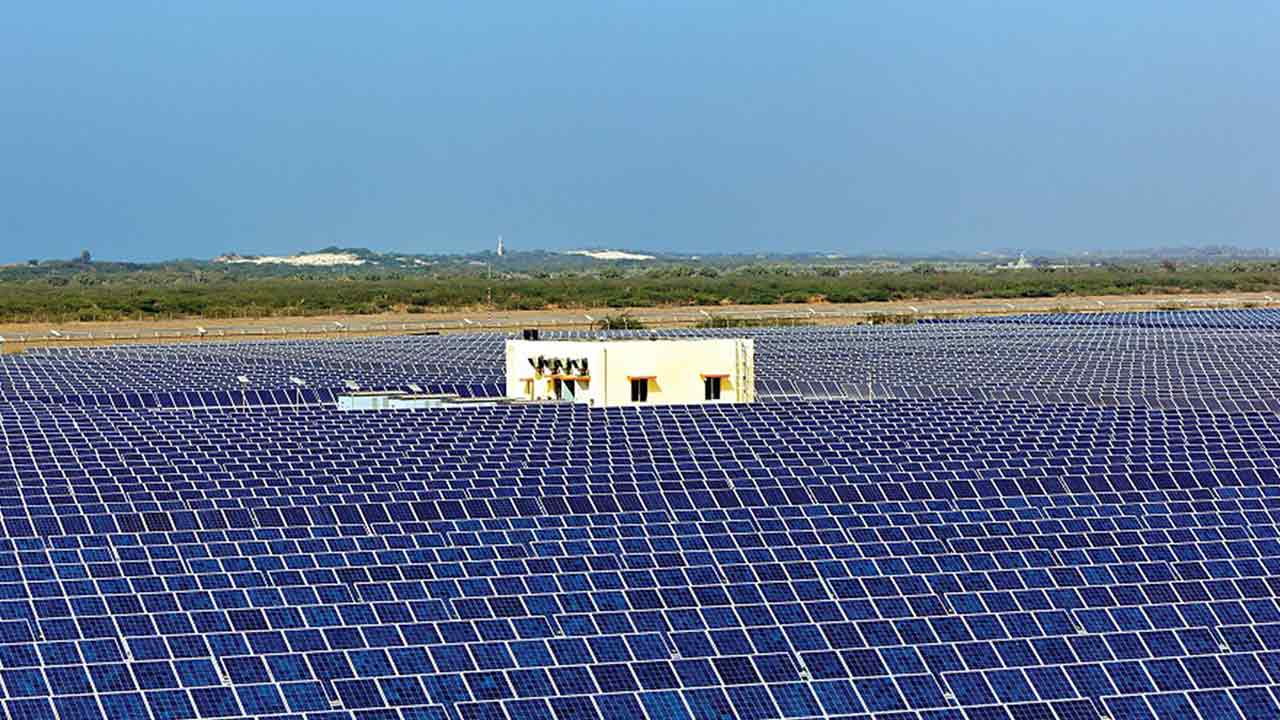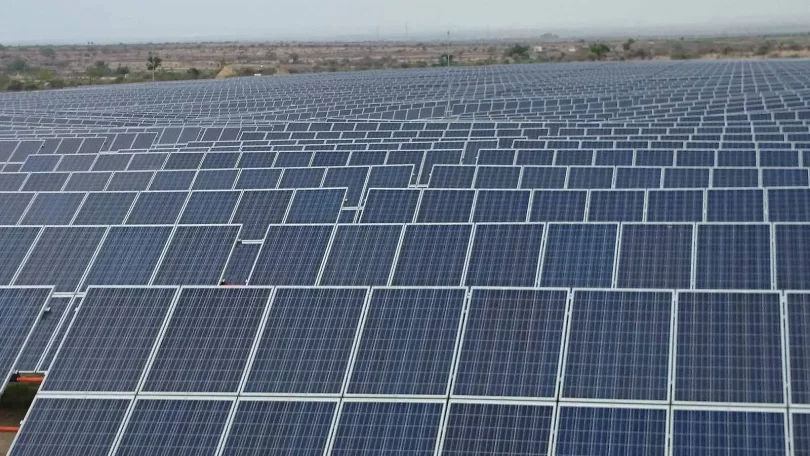[ad_1]
Sunny days aren’t a favourite kind of weather in India, but they can serve as a tremendous economic asset. With 300 sunny days each year, India’s solar energy potential stands at 5000 trillion kilowatt-hours per year. This means that we can generate more power in one year using solar power, than we would from using up all our fossil fuel reserves.
For rural households, where last mile connectivity is still a work in progress, this can bring a sea change to nearly every aspect of life.
Solar Energy and Health
People in rural India still lack access to grid-connected power and have to rely on Kerosene, diesel and woodfired chulhas which create several health hazards for women and Children. With a drop in capital costs and inventive pricing schemes, solar power can prove to be an attractive alternative.
Because solar power can be deployed in a decentralised manner, it has several applications: lighting, heating, water filtration, and productivity. Solar lighting, for instance, negates the use of kerosene lamps and all hazards associated with them. The additional 4-5 hours of lighting provided by these solar lamps can improve productivity and household incomes by the simple process of extending working hours.
Clean water remains a big challenge in rural India since water treatment requires power. Here too, solar energy is making inroads. Nagaland recently installed a solar-powered water treatment plant in Tsiesma, a village near Kohima, which works on an advanced membrane filtration system to produce pure drinking water.

Solar Energy and Livelihoods
The movement from solar lamps to solar microgrids to solar pumps is a small, but an immensely effective one.
Solar microgrids are integrated networks that capture, store and distribute clean solar energy to an entire community. The energy comes from a central ‘hub’ of high-quality solar panels and batteries, and each family draws power from it.
In India, solar microgrids are proving to be a cost-effective solution to an otherwise expensive problem. Tata Power’s Renewable Microgrid is the country’s leading player and plans to roll out 10,000 microgrids in the near future. It has already installed around 200 microgrids so far most of which are present in Uttar Pradesh and Bihar, and a pilot microgrid programme is underway in 10-15 villages in Odisha. Microgrids help power, not just homes, but shops, medical clinics (for refrigeration), electric mobility providers, telecom towers, teaching centres, and roadside eateries, raising median incomes and living standards for all families via access to education, medicine and employment opportunities.
India’s agriculture sector is heavily dependent on monsoons for natural irrigation. Pumps are used as an artificial means to provide water for irrigation. Farmers rely on grid electricity or diesel gen-sets to run the pump, which leads to huge delays and economic stress. Hence, for our farmers, an effective irrigation system such as the Solar Water Pump is a great boon. It increases their crop yield by ensuring a reliable and perennial supply of water to their fields.
Standalone solar power agri pumps have the potential to improve the productivity of Indian farmers and are an environment-friendly alternative to the 26 million agri pumps already in use. 10 million of these are diesel-fired. By replacing just 1 million diesel pumps with solar ones, we can expect to mitigate the usage of 9.4 billion litres of diesel, which translates into direct savings for farmers. It also helps us save 25.3 million tonnes of CO2.
To cater to this need Tata Power Solar offers both DC and AC range of Solar Water Pumps in both Surface and Submersible categories. These pumps help reduce farmers’ dependency on expensive fuels and their maintenance costs as opposed to conventional irrigation systems. With over 60,000 pumps installed across India till date, our goal is to provide water assurance and financial security to all farmers in India.
Tata Power is also an empanelled agency under the PM-KUSUM scheme to help our Indian farmers with their irrigation needs even in the most remote corners of the country and assure a steady income for them at all times. Its Solar Pumps solutions are now also available in the retail market for the benefit of a growing number of consumers who want to install them instantaneously in rural, semi-rural or urban areas.
Solar energy and solar technology also have a knock-on effect by providing employment to rural youth. According to the International Renewable Energy Agency (IRENA), the Indian solar sector created 1,15,000 employment opportunities in 2018 and it will continue to increase incoming years. As the adaption of these systems grows, so will the demand for semi-skilled labourers who can install and repair these systems. Tata Power is skilling 3000 youth each year to work in the renewable energy sector through the Tata Power Skill Development Institute, and the GOI is also investing in a number of upskilling initiatives aimed at renewables and rural youth.
Solar Energy and the Indian economy
As the Indian economy grows, and as it moves up the value chain, the energy demands will only grow. According to the 19th Electric Power Survey Report, the electricity consumption on an all-India basis during the year 2016-17, 2021-22 and 2026-27 has been assessed as 921 BU,1300 BU and 1743 BU respectively. This is projected to increase to 3049 BU by 2036-37. At present, India’s total power generation capacity in 2021-22 stands at 1491 BU only. Given that India will no longer add coal-fired power plants, the only economically viable way to meet this demand is through renewables.
In 2019, India ranked fourth globally in installed renewable power capacity, with solar and wind power leading the way. Prime Minister Narendra Modi has set a goal to generate 450 gigawatts of renewable energy by 2030 – five times the current capacity. If achieved, it also means that India would generate 60% of its electricity from non-fossil fuel sources by 2030, well beyond the40% target in its Paris pledge. It would also mean that India would save on fuel import bills, at a time when fuel prices are more uncertain than ever.
According to the Standard Chartered SDG Investment Map, India alone offers a private investment opportunity of over $700 billion in clean energy. Solar Energy and India’s rise to the energy challenge India has the opportunity to show the world how an emerging economy can meet its energy needs sustainably – both for its economy, and its environment. The GOI raised several eyebrows when it made the NDC generate 40% of our power from non-fossil fuel sources at the Paris Climate Conference. However, the GOI was able to make this commitment knowing that it had the backing of private players like Tata Power who are making tremendous progress in this regard.
In addition to 190 + microgrids in rural areas, Tata Power has already accomplished over 1000MW in installed capacity through rooftop solar installations, making it India’s No.1 Solar EPC company for the last 8 years. Through these installations alone, Tata Power’s customers have saved up to 50% on their average electricity bills and saved 30 million+ tonnes of CO2.
Through innovative pricing that reduces upfront costs, full-service installation and repair, and a 25-year warranty, Tata Power is helping India inch towards a green energy future one rooftop at a time. Tata Power is also setting up a 4GW solar cell and module manufacturing capacity with an investment of approx. 3,400 crore. This will, in turn, reduce India’s dependence on solar cell and battery imports. As of this writing, Tata Power boasts of 4920 MW renewable capacity, and2000+ EV charging stations. Tata Power’s Clean Energy Incubation Centre incubates new clean and green energy startups, fueling the next wave of innovation in green energy technologies that will propel India to the forefront of global energy conservation, generation and sustainability.
Conclusion
For Tata Power, the sustainability ethos goes deep. “Tata Power’s pillar of sustainability is based on the vision of our founder, Jamshetji Tata, from over a 100 years ago. Our mission has always been to provide clean, abundant and affordable energy to the people of this country. Its relevance is probably greater today, when climate change is a global threat,” said Dr Praveer Sinha, CEO&MD, Tata Power in a recent interview with Network18.
Tata Power’s portfolio presently comprises 32% green energy and is set to increase to 70% by 2030, and 100% by 2045. Tata Power is India’s first company to set itself a net zero target by 2045. However, the belief that Sustainable is Attainable, is one they want to instil in the larger community; making a sustainable lifestyle ‘attainable’ for millions of Indians via wide-scale adoption of green products and solutions. They’ve begun by giving their customers the option to choose a green power supply by adopting a green tariff.
As India grows its capacity to generate power from clean sources, and as Indian consumers and businesses increasingly opt for green energy, India marches steadily into a future where she leads the world by example.
This is a Partnered Post.
Read the Latest News and Breaking News here
[ad_2]
Source link








